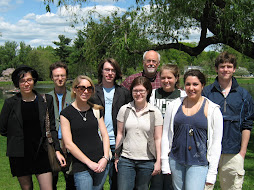
The Willimantic (Photo by Justin Maher)
By Gregory Hebert and Rafal Wilson
When it comes to dams and hydropower, proponents and opponents agree that they want what’s best for the environment—the problem lies in their definitions of “what’s best.”
Dan Mullins of the Willimantic Whitewater Partnership and Laura Wildman, a consultant assisting the group, believe that what the environment needs is fewer dams and more free-flowing water. Formed in 2001 when Mullins, the organization’s president, was attending law school, the whitewater partnership is primarily dedicated to restoring the Willimantic River by either modifying or removing the four dams.
“There are a lot of dam removal projects out there,” said Wildman, “but this one has a lot of community support and a lot of different parts to it… It’s just a bigger dream.”
This would help migratory fish return to the region as well as provide a whitewater river for the local residents to enjoy. “A lot of these towns were settled first because of the migratory fish runs,” Mullins said, noting that the Native American names tended to be descriptive of the area. Willimantic, for example, meant “land of the fast-running water” in reference to the river before it was dammed.
More long-term goals include developing a waterfront community park, the creation of outdoor art amenities such as an amphitheater, and expanding the reach of their organization downriver.
The greatest challenges that the organization face are financial, but it also struggles to respect the historical value of the dams. “The whole thing’s a balancing act,” said Wildman. “All of New England has a historical timeline, even before the industrial period… Through all these projects, we’ll look to document that history, or put up signs, to keep it.”
Probably the organization’s biggest accomplishment so far was its ability to attract enough government grants and financial support to buy a key 3.4-acre parcel on Bridge Street bordering the river. One of the four dams was also included in the purchase.
The partnership has also been working with the developers of the East Coast Greenway, a trail that would run from Florida to Maine and pass through Willimantic, and negotiating easements with Northeast Utilities, which owns land along the river. That agreement will provide additional access to the river.
Mullins said that the power plants that use the dams are an acceptable loss when compared to the benefits of getting rid of them. Two of the four that exist are no longer in use at all. Further, the 1.5 megawatts produced over 20 years are evenly balanced against the benefits of a free river and the return of the fish, he said. Its excellent location for whitewater rafting is owed to its bedrock base, as well as the fact that the steepness of the river means it drops 90 feet at a mile and a half throughout its length.
“We want to take the town of Willimantic, which turned its back against [the river] and turn it back toward it,” said Wildman.
Duncan Broatch disagrees. Broatch is president of Summit Hydropower, which owns plants elsewhere in Connecticut, and chairman of the Connecticut Small Power Producers Association, which represents other hydro owners. Broatch believes that keeping the dams and taking advantage of the electricity they produce is the environmentally responsible thing to do.
“We need to get [electricity] where we can with a minimum of environmental impact,” he said. Broacth said that hydropower is the answer. He said that dam-driven hydropower is the No. 1 renewable resource available, helps reduce air pollution, hinders global warming, and significantly lessens U.S. dependence on expensive foreign oil, while remaining an acceptable sacrifice for future generations.
Broatch was the original developer of the two hydro projects but sold them when he was unable to acquire the financing to complete them. Currently they are owned by Enel North America, a subsidiary of Enel SpA, Italy’s largest power producer.
The dams also have licenses from the Federal Energy Regulatory Commission and getting those licenses altered to remove the impoundments and hydro facilities is a formidable task.
Broach said that the dams could be a non-issue, to the point where removing them may even be harmful. “The fish and the environment have gotten used to this,” he said. He said that at the other facilities he owns he have been able to co-exist with kayakers, who have ways to go around the dams while still enjoying the river. He even had an answer to the idea that the dams are an eyesore—he called in an artist to judge the aesthetic value of a dam while applying for a license.
“She said that she valued the interplay of water as it flowed over the dam,” Broach said.




